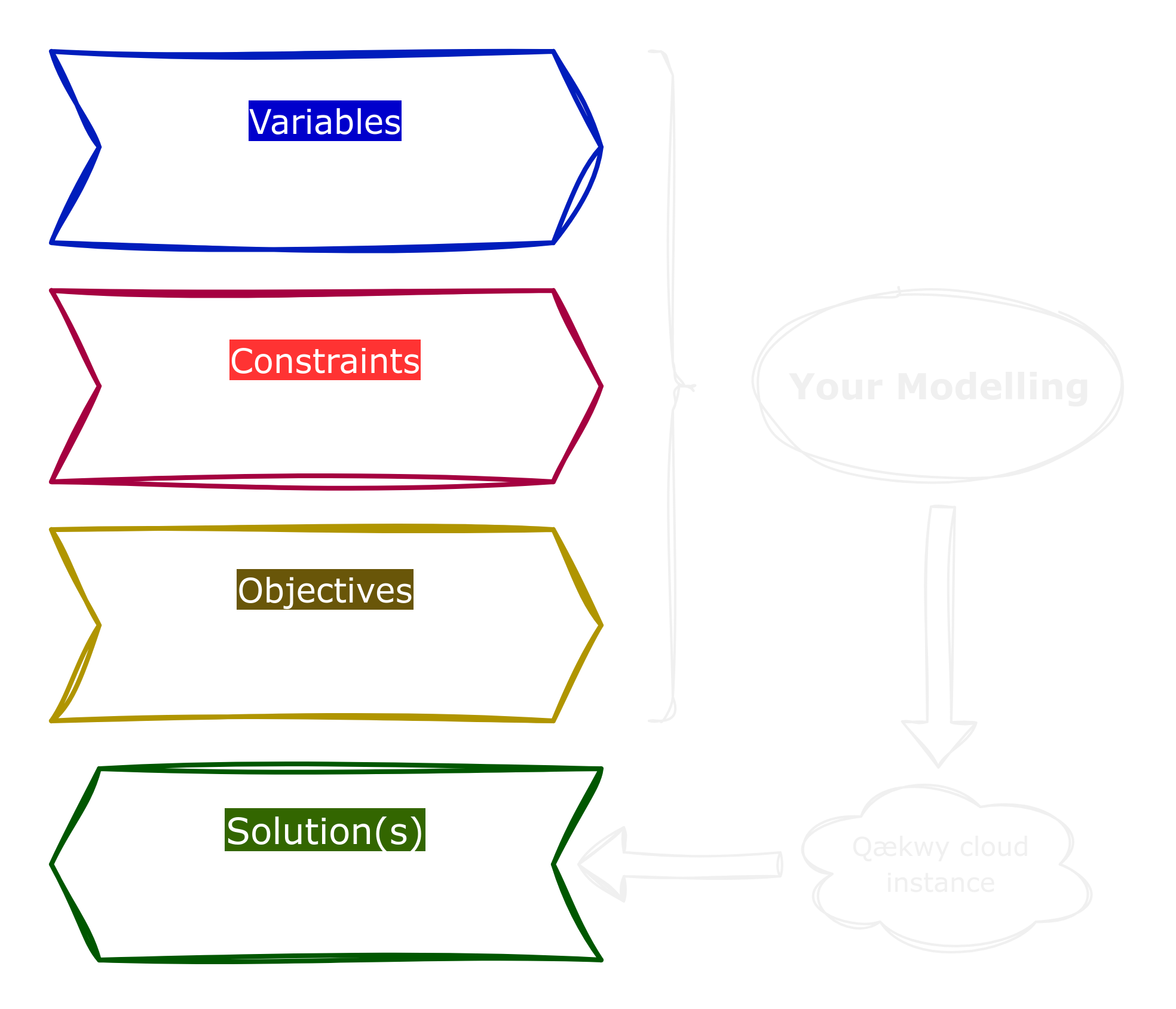🙀 what is Constraint Programming
At its core, Constraint Programming is a powerful problem-solving paradigm that involves modeling problems with a set of constraints and rules. These constraints define the relationships and limitations among variables in a problem. The goal is to find solutions that satisfy all the constraints, adhering to the specified rules. Constraint Programming is widely used in various fields, from artificial intelligence and operations research to scheduling and optimization.
Constraint Programming shines when faced with intricate problems that involve a multitude of variables, constraints, and possibilities. Unlike traditional programming, which focuses on algorithmic steps, Constraint Programming allows you to define the problem's properties and let the solver handle the intricacies of finding solutions. This makes it especially useful for problems that are difficult to model with explicit algorithms.
🌵 solving Complex Problems
Traditional methods might struggle when faced with a high number of variables, intricate relationships, and intricate rules. However, CP thrives in such scenarios, providing efficient solutions without the need for explicitly defining algorithms.
By formulating problems using constraints, you can express the inherent relationships and restrictions within a problem. This allows CP solvers to explore a solution space guided by these constraints, narrowing down possibilities and ultimately finding feasible solutions. This approach makes it ideal for scenarios like scheduling tasks, optimizing resource allocation, solving puzzles, and more.
🔎 how does Qaekwy Work

😾 defining the Problem
You start by defining your optimization problem using the Qaekwy Python library. This involves specifying variables, constraints, and objectives that describe your problem.
class MyRealWorldProblem(Modeller):
def __init__(self):
super().__init__()
# Create integer variables, solution value between 0 and 10
x = IntegerVariable(var_name="x", domain_low=0, domain_high=10)
y = IntegerVariable(var_name="y", domain_low=0, domain_high=10)
z = IntegerVariable(var_name="z", domain_low=0, domain_high=10)
# Constraints
constraint_1 = RelationalExpression(y > 2 * x)
constraint_2 = RelationalExpression(x >= 4)
constraint_3 = RelationalExpression(z == y - x)
# Objective: Maximize z
self.add_objective(
SpecificMaximum(variable=z)
)
# Add variables
self.add_variable(x)
self.add_variable(y)
self.add_variable(z)
# ... and constraints
self.add_constraint(constraint_1)
self.add_constraint(constraint_2)
self.add_constraint(constraint_3)
# Set the searching strategy
self.set_searcher(SearcherType.BAB)
🌩 submitting the Problem to the cloud
Once your problem is defined, you send it to Qaekwy's small cloud instance. This is done using the Qaekwy Python Client, which acts as a bridge between your code and Qaekwy's cloud instance.
# Create a Qaekwy engine for interaction
# with the small freely-available Cloud instance
qaekwy_engine = DirectEngine()
# Create the optimization problem instance
my_realworld_problem = MyRealWorldProblem()
# Request the Qaekwy engine to solve the problem
response = qaekwy_engine.model(model=my_realworld_problem)
🚀 solving process
Qaekwy's magic begins as it employs advanced Constraint Solving techniques to explore possible solutions. It considers the constraints and objectives you provided to find the best possible answer.
💡 fetching Solution
After a successful solving and optimization process, Qaekwy sends back the solutions it discovered. These solutions represent the best configurations that meet your solution's criteria.
# Retrieve the list of solutions from the response
list_of_solutions = response.get_solutions()
# Print the solution(s) obtained
for solution in list_of_solutions:
print(f"Optimal solution: x = {solution.x}")
print(f"Optimal solution: y = {solution.y}")
print(f"Optimal solution: z = {solution.z}")
😺 integrating with your code
You can easily integrate the solutions returned by Qaekwy back into your Python code. This empowers you to make informed decisions based on the optimized outcomes.

🪄 solving complex Problems
Whether it's scheduling, resource allocation, or any other complex challenge, Qaekwy simplifies the process of finding optimal solutions, making difficult problems more manageable.

